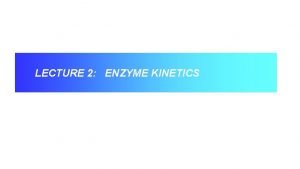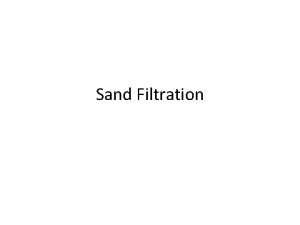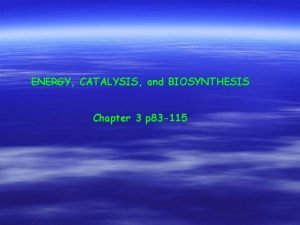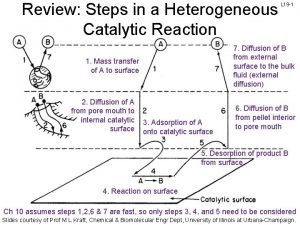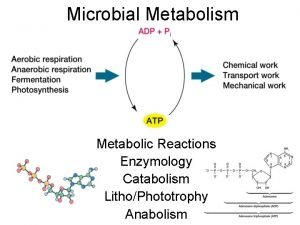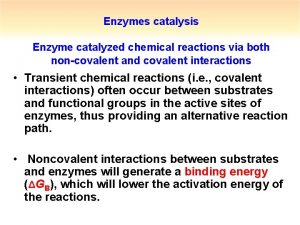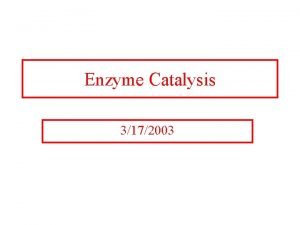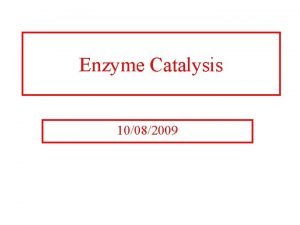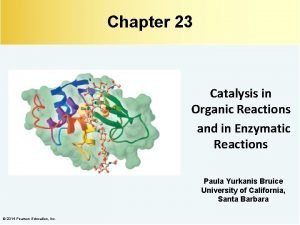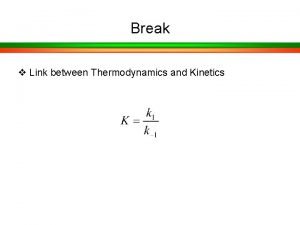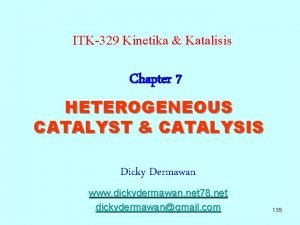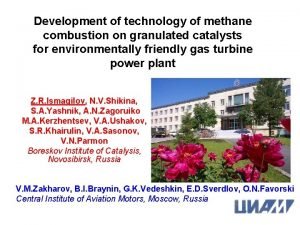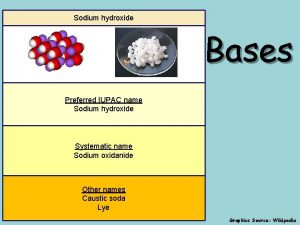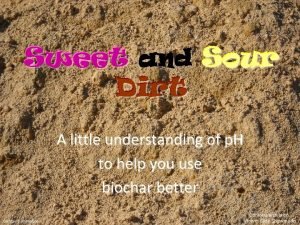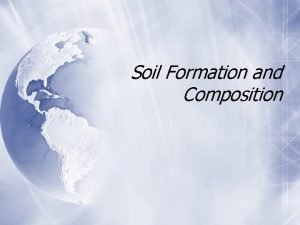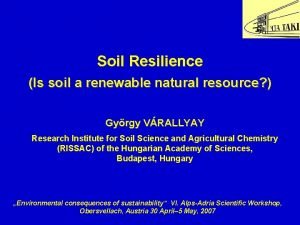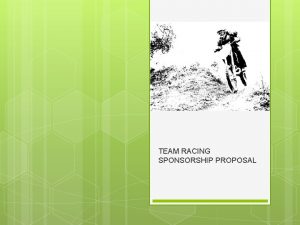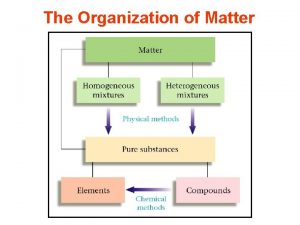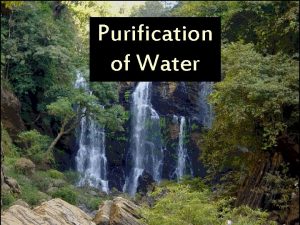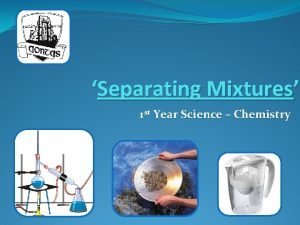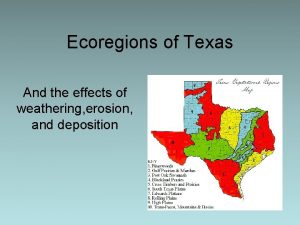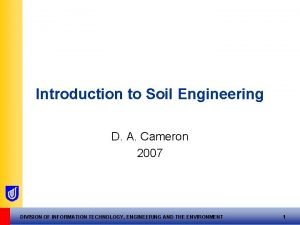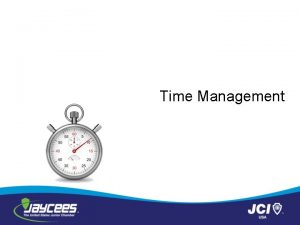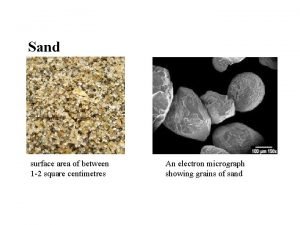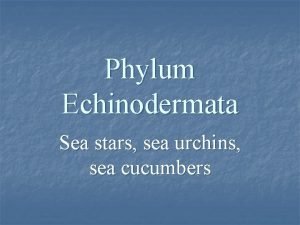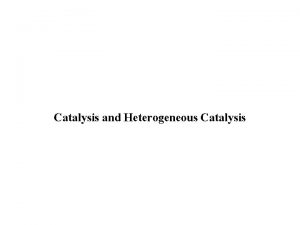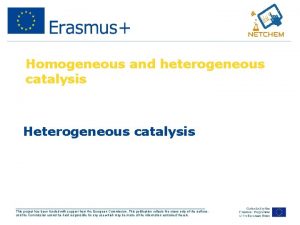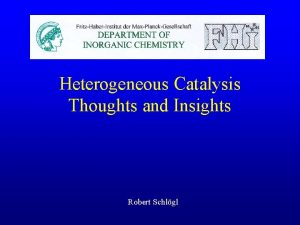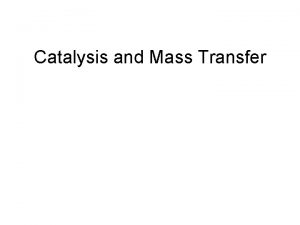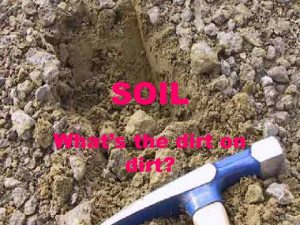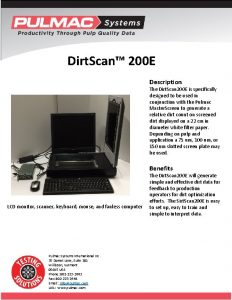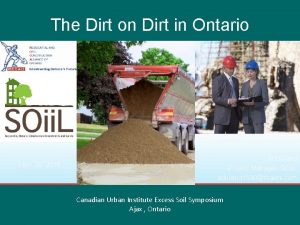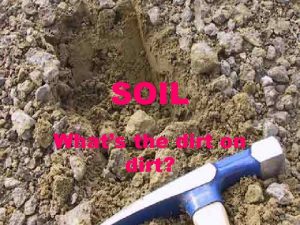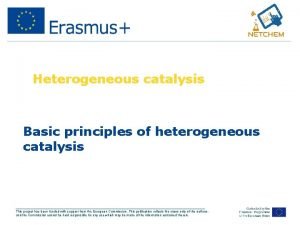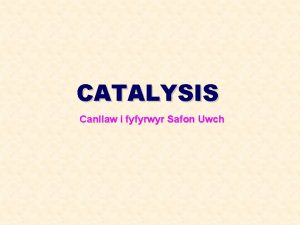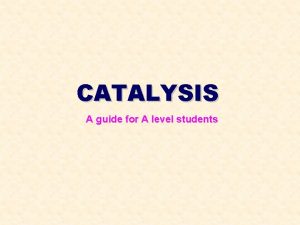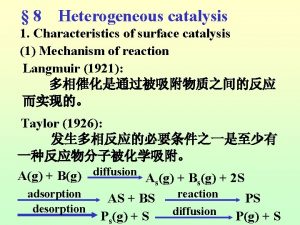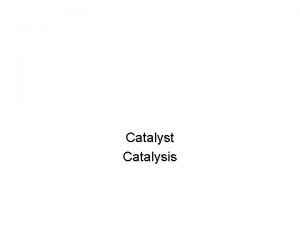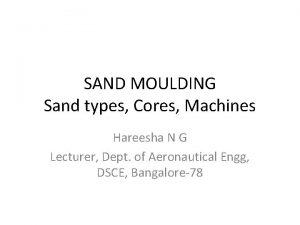Industrial Catalysis How Dirt and Sand Catalyze Some


































































- Slides: 66

Industrial Catalysis How Dirt and Sand Catalyze Some of the Most Important Transformations Justin J. Teesdale Harvard Energy Journal Club September 29 th, 2017

Industrial (Petro)Chemical Energy Use In 2014, Total Primary Energy Supply (TPES) = 155, 000 TWh (560 EJ) International Energy Agency (IEA) (2011). Key world energy statistics-2011. International Energy Agency (IEA) (2007). Tracking Industrial Efficiency and CO 2 Emisssions-2007.

Industrial (Petro)Chemical Energy Use In 2014, Total Primary Energy Supply (TPES) = 155, 000 TWh (560 EJ) Industry uses ~20% of the TPES International Energy Agency (IEA) (2011). Key world energy statistics-2011. International Energy Agency (IEA) (2007). Tracking Industrial Efficiency and CO 2 Emisssions-2007.

Industrial (Petro)Chemical Energy Use In 2014, Total Primary Energy Supply (TPES) = 155, 000 TWh (560 EJ) Industry uses ~20% of the TPES Chemical and Petrochemical (30%) Iron and Steel (20%) Non-ferrous metals and minerals (10%) Paper, pulp, and print (5%) Food and tobacco International Energy Agency (IEA) (2011). Key world energy statistics-2011. International Energy Agency (IEA) (2007). Tracking Industrial Efficiency and CO 2 Emisssions-2007.

Importance of Catalysis in Industry (2004) International Energy Agency (IEA) (2007). Tracking Industrial Efficiency and CO 2 Emisssions-2007.

Importance of Catalysis in Industry (2004) All products of steam cracking and other high T/high P processes that don’t involve catalysts International Energy Agency (IEA) (2007). Tracking Industrial Efficiency and CO 2 Emisssions-2007.

Importance of Catalysis in Industry (2004) All products of steam cracking and other high T/high P processes that don’t involve catalysts Involves supported metal oxide catalysts International Energy Agency (IEA) (2007). Tracking Industrial Efficiency and CO 2 Emisssions-2007.

Importance of Catalysis in Industry (2004) All products of steam cracking and other high T/high P processes that don’t involve catalysts Involves supported metal oxide catalysts Methanol and Ammonia production utilizes 1. 4 % of TPES International Energy Agency (IEA) (2007). Tracking Industrial Efficiency and CO 2 Emisssions-2007.

Steam Reforming of Methane and Water-Gas Shift (WGS) Haber-Bosch Process Methanol Production Fischer-Tropsch Process

Steam Reforming: Stats Responsible for almost 95% of annual production of hydrogen US DOE (2013). Report of the Hydrogen Production Expert Panel.

Steam Reforming: Stats Responsible for almost 95% of annual production of hydrogen ~ 50 million tons of hydrogen produced annually (worldwide) US DOE (2013). Report of the Hydrogen Production Expert Panel.

Steam Reforming: Stats Responsible for almost 95% of annual production of hydrogen ~ 50 million tons of hydrogen produced annually (worldwide) Primarily used immediately in petroleum industry for the synthesis of other chemicals and ammonia Largest production of any chemical in industry on a per mole basis by a large margin US DOE (2013). Report of the Hydrogen Production Expert Panel.

Steam Reforming: The Setup ECN (2004). On the Catalytic Aspects of Steam-Methane Reforming.

Steam Reforming: The Setup ECN (2004). On the Catalytic Aspects of Steam-Methane Reforming.

Steam Reforming: The Setup Overall process 50 -80% efficient, but highly dependent on plant design ECN (2004). On the Catalytic Aspects of Steam-Methane Reforming.

Steam Reforming: Reaction Conditions Mix of steam and methane pass over catalyst @ 700 -1000 °C and 3 -25 bar Catalyst typically metal supported on a high surface area material (silica, Al 2 O 3, Mg. O, etc) ECN (2004). On the Catalytic Aspects of Steam-Methane Reforming.

Steam Reforming: Reaction Conditions Mix of steam and methane pass over catalyst @ 700 -1000 °C and 3 -25 bar Catalyst typically metal (nickel) supported on a high surface area material (silica, Al 2 O 3, Mg. O, etc) Most of this chemistry was developed in 1960 s and is still being employed today ECN (2004). On the Catalytic Aspects of Steam-Methane Reforming.

Steam Reforming: Catalyst Design Target: New catalysts that can operate at lower temperatures

Steam Reforming: Catalyst Design Target: New catalysts that can operate at lower temperatures Typically employing the same catalyst (Mn/Fe/Co/Ni) but with more sophisticated/expensive supports

Steam Reforming: Catalyst Design Target: New catalysts that can operate at lower temperatures Typically employing the same catalyst (Mn/Fe/Co/Ni) but with more sophisticated/expensive supports Ni on La 2 O 3–Zr. O 2–Ce. O 2 support/promoter can go as low as 400 °C

Steam Reforming: Catalyst Design Target: New catalysts that can operate at lower temperatures Typically employing the same catalyst (Mn/Fe/Co/Ni) but with more sophisticated/expensive supports Ni on La 2 O 3–Zr. O 2–Ce. O 2 support/promoter can go as low as 400 °C Preventing catalyst degradation (sintering) via different metal precursors (affects particle size and spacing)

Steam Reforming of Methane and Water-Gas Shift (WGS) Haber-Bosch Process Methanol Production Fischer-Tropsch Process

Haber-Bosch: Stats Responsible for 1 -1. 5% of annual energy consumption ~ 140 million tons of ammonia produced annually (worldwide) USGS (2017). Minerals commodity Summaries–Nitrogen (fixed)–Ammonia 2017. Smil, Vaclav World Agriculture, 2011, 2, 9 -13.

Haber-Bosch: Stats Responsible for 1 -1. 5% of annual energy consumption ~ 140 million tons of ammonia produced annually (worldwide) 88% of produced ammonia used for the synthesis of fertilizers USGS (2017). Minerals commodity Summaries–Nitrogen (fixed)–Ammonia 2017. Smil, Vaclav World Agriculture, 2011, 2, 9 -13.

Haber-Bosch: Stats Responsible for 1 -1. 5% of annual energy consumption ~ 140 million tons of ammonia produced annually (worldwide) 88% of produced ammonia used for the synthesis of fertilizers Quadrupling of arable land on ice-free continents. At 1900 level production, to produce 2011 quantity of ammonia would require ~50% of total land on ice-free continents (as opposed to 15% now). USGS (2017). Minerals commodity Summaries–Nitrogen (fixed)–Ammonia 2017. Smil, Vaclav World Agriculture, 2011, 2, 9 -13.

Haber-Bosch: Stats Responsible for 1 -1. 5% of annual energy consumption ~ 140 million tons of ammonia produced annually (worldwide) 88% of produced ammonia used for the synthesis of fertilizers Quadrupling of arable land on ice-free continents. At 1900 level production, to produce 2011 quantity of ammonia would require ~50% of total land on ice-free continents (as opposed to 15% now). USGS (2017). Minerals commodity Summaries–Nitrogen (fixed)–Ammonia 2017. Smil, Vaclav World Agriculture, 2011, 2, 9 -13.

Haber-Bosch: Stats Energy-intensive process because N 2 is extremely inert Quadrelli, E. A. Chem. Soc. Rev. 2014, 43, 547.

Haber-Bosch: Stats Responsible for 1 -1. 5% of annual energy consumption ~ 140 million tons of ammonia produced annually (worldwide) 88% of produced ammonia used for the synthesis of fertilizers Quadrupling of arable land on ice-free continents. At 1900 level production, to produce 2011 quantity of ammonia would require ~50% of total land on ice-free continents (as opposed to 15% now).

Haber-Bosch: The Setup

Haber-Bosch: The Setup Haber-Bosch benefitted from 100 years of optimization, as a result efficiencies are typically >95%

Haber-Bosch: What’s the catch? Catalyst is simply metallic iron doped with potassium (K 2 O) and supported on either silica or alumina DOE Roundtable Report (2016). Sustainable Ammonia Synthesis

Haber-Bosch: What’s the catch? Catalyst is simply metallic iron doped with potassium (K 2 O) and supported on either silica or alumina The energy intensive components are the heat and pressure necessary in the steam reformer to produce pure H 2 to be fed into Haber-Bosch reactor DOE Roundtable Report (2016). Sustainable Ammonia Synthesis

Haber-Bosch: What’s the catch? Catalyst is simply metallic iron doped with potassium (K 2 O) and supported on either silica or alumina The energy intensive components are the heat and pressure necessary in the steam reformer to produce pure H 2 to be fed into Haber-Bosch reactor Also heat and pressure necessary for the Haber-Bosch reactor DOE Roundtable Report (2016). Sustainable Ammonia Synthesis

Haber-Bosch: What’s the catch? Catalyst is simply metallic iron doped with potassium (K 2 O) and supported on either silica or alumina The energy intensive components are the heat and pressure necessary in the steam reformer to produce pure H 2 to be fed into Haber-Bosch reactor Also heat and pressure necessary for the Haber-Bosch reactor Significant cost to achieve high purity H 2 and N 2 as O 2, CO 2, and other oxygen containing compounds poison the catalyst DOE Roundtable Report (2016). Sustainable Ammonia Synthesis

Haber-Bosch: What’s the catch? Catalyst is simply metallic iron doped with potassium (K 2 O) and supported on either silica or alumina The energy intensive components are the heat and pressure necessary in the steam reformer to produce pure H 2 to be fed into Haber-Bosch reactor Also heat and pressure necessary for the Haber-Bosch reactor Significant cost to achieve high purity H 2 and N 2 as O 2, CO 2, and other oxygen containing compounds poison the catalyst New catalysts must aim to operate at lower temperature and pressure and/or be more selective for N 2 conversion to NH 3. DOE Roundtable Report (2016). Sustainable Ammonia Synthesis

Haber-Bosch: New Catalyst Design Move towards more sophisticated materials and designs Extremely high bar set by very cheap materials Fe/K mixtures supported on carbon nanotubes Giddey, S. Int. J. Hydrog. Energy, 2013, 38, 14576.

Haber-Bosch: New Catalyst Design Jaramillo, T. F. Nat. Mater. 2017, 16, 70.

Haber-Bosch: New Catalyst Design Move towards more sophisticated materials and designs Extremely high bar set by very cheap materials Fe/K mixtures supported on carbon nanotubes Using ruthenium/activated carbon-based catalysts Giddey, S. Int. J. Hydrog. Energy, 2013, 38, 14576.

Haber-Bosch: New Catalyst Design Move towards more sophisticated materials and designs Extremely high bar set by very cheap materials Fe/K mixtures supported on carbon nanotubes Using ruthenium/activated carbon-based catalysts Improving steam reforming efficiency or replacing it entirely Giddey, S. Int. J. Hydrog. Energy, 2013, 38, 14576.

Haber-Bosch: New Catalyst Design Move towards more sophisticated materials and designs Fe/K mixtures supported on carbon nanotubes Using ruthenium/activated carbon-based catalysts Improving steam reforming efficiency or replacing it entirely Jaramillo, T. F. Science 2017, 355, 146.

Haber-Bosch: New Catalyst Design Jaramillo, T. F. Science 2017, 355, 146.

Steam Reforming of Methane and Water-Gas Shift (WGS) Haber-Bosch Process Methanol Production Fischer-Tropsch Process

Methanol: Stats 40% of methanol is converted to formaldehyde International Energy Agency (IEA) (2007). Tracking Industrial Efficiency and CO 2 Emisssions-2007.

Methanol: Stats 40% of methanol is converted to formaldehyde Remaining methanol is used in the synthesis of fine chemicals or as a fuel additive International Energy Agency (IEA) (2007). Tracking Industrial Efficiency and CO 2 Emisssions-2007.

Methanol: Stats 40% of methanol is converted to formaldehyde Remaining methanol is used in the synthesis of fine chemicals or as a fuel additive Responsible for ~0. 4 % of world energy use International Energy Agency (IEA) (2007). Tracking Industrial Efficiency and CO 2 Emisssions-2007.

Methanol: Catalyst Industrial catalyst is an alumina pellet (Al 2 O 3) coated in copper/zinc oxides Catalyst is >99. 5% efficient (not overall energy efficiency) http: //www. technology. matthey. com/article/61/3/172 -182/

Methanol: Catalyst Industrial catalyst is an alumina pellet (Al 2 O 3) coated in copper/zinc oxides Catalyst is >99. 5% efficient (not overall energy efficiency) Requires temperatures 400 -600 °C and pressures of 40 -100 atm. Energy efficiency and cost is gated by steam reformation (H 2) http: //www. technology. matthey. com/article/61/3/172 -182/

Methanol: Catalyst Industrial catalyst is an alumina pellet (Al 2 O 3) coated in copper/zinc oxides Catalyst is >99. 5% efficient (not overall energy efficiency) Requires temperatures 400 -600 °C and pressures of 40 -100 atm. Energy efficiency and cost is gated by steam reformation (H 2) Same catalyst that was first used in 1960 s http: //www. technology. matthey. com/article/61/3/172 -182/

Methanol: Catalyst Design Develop catalysts that operate at lower T and P or come up with a new system entirely Norskov, J. K. Nat. Chem. 2014, 6, 320. Jaramillo, T. F. 2017, 5, 955. Jaramillo, T. F. 2014, 136, 14107.

Methanol: Catalyst Design Develop catalysts that operate at lower T and P or come up with a new system entirely Norskov, J. K. Nat. Chem. 2014, 6, 320. Jaramillo, T. F. 2017, 5, 955. Jaramillo, T. F. 2014, 136, 14107.

Methanol: Catalyst Design Develop catalysts that operate at lower T and P or come up with a new system entirely Norskov, J. K. Nat. Chem. 2014, 6, 320. Jaramillo, T. F. 2017, 5, 955. Jaramillo, T. F. 2014, 136, 14107.

Methanol: Catalyst Design Develop catalysts that operate at lower T and P or come up with a new system entirely Norskov, J. K. Nat. Chem. 2014, 6, 320. Jaramillo, T. F. 2017, 5, 955. Jaramillo, T. F. 2014, 136, 14107.

Steam Reforming of Methane and Water-Gas Shift (WGS) Haber-Bosch Process Methanol Production Fischer-Tropsch Process

Fischer-Tropsch: Stats Discovered in 1925 by Franz Fischer and Hans Tropsch Syngas heated over a catalyst bed (typically Fe or Co) at 25 atm and either 230 °C (LTFT) or 320 °C (HTFT) Klerk, A. Green Chem. 2008, 10, 1249.

Fischer-Tropsch: Stats Discovered in 1925 by Franz Fischer and Hans Tropsch Syngas heated over a catalyst bed (typically Fe or Co) at 25 atm and either 230 °C (LTFT) or 320 °C (HTFT) Klerk, A. Green Chem. 2008, 10, 1249.

Fischer-Tropsch: Stats Viability heavily depends on crude oil prices, as a result, there are very few plants in operation Klerk, A. Green Chem. 2008, 10, 1249.

Fischer-Tropsch: Stats Viability heavily depends on crude oil prices, as a result, there are very few plants in operation South African company that does coal-toliquids Gas-to-liquids (GTL) facility in Malaysia X-to-liquids (XTL) facility in Australia Klerk, A. Green Chem. 2008, 10, 1249.

Fischer-Tropsch: Stats Viability heavily depends on crude oil prices, as a result, there are very few plants in operation South African company that does coal-toliquids Gas-to-liquids (GTL) facility in Malaysia X-to-liquids (XTL) facility in Australia Difficult to pin down overall energy efficiency due to variability in plant design and catalyst employed Also challenging due to significantly less data Klerk, A. Green Chem. 2008, 10, 1249.

Fischer-Tropsch: Why we care Provides security in gasoline/diesel sector Requires a supply of syngas which can be generated from multiple sources http: //www. syngaschem. com/

Fischer-Tropsch: Catalyst Design Very similar to catalysts developed for methanol production The low selectivity catalysts are typically sold as FT catalysts

Fischer-Tropsch: Catalyst Design Very similar to catalysts developed for methanol production The low selectivity catalysts are typically sold as FT catalysts Big area of research in industry (Chevron) …. . and also in academia

Fischer-Tropsch: Catalyst Design Navarro, V. Nat. Chem. 2016, 8, 929.

Jiao, F. ; Li, J. ; Pan, X. Science 2016, 351, 1065.

Summary and Outlook Steam Reforming of Methane and Water-Gas Shift (WGS) Haber-Bosch Process Methanol Production Fischer-Tropsch Process

Summary and Outlook Steam Reforming of Methane and Water-Gas Shift (WGS) Haber-Bosch Process Methanol Production Fischer-Tropsch Process Major Challenges Efficiency improvements or new method for H 2 Better catalysts for Haber. Bosch and Fischer-Tropsch (syngas generation)

Summary and Outlook Steam Reforming of Methane and Water-Gas Shift (WGS) Haber-Bosch Process Methanol Production Fischer-Tropsch Process Major Challenges Efficiency improvements or new method for H 2 Better catalysts for Haber. Bosch and Fischer-Tropsch (syngas generation) How do we do these processes as we move away from fossil fuels?
 General principles of catalysis
General principles of catalysis Difference between rapid sand filter and slow sand filter
Difference between rapid sand filter and slow sand filter Perbedaan rapid sand filter dan slow sand filter
Perbedaan rapid sand filter dan slow sand filter What is the formula for kinetic friction
What is the formula for kinetic friction Loam sand moulding
Loam sand moulding Energy catalysis and biosynthesis
Energy catalysis and biosynthesis Decao
Decao Enzymatic catalysis
Enzymatic catalysis Catalysis by approximation
Catalysis by approximation What is covalent catalysis
What is covalent catalysis What is covalent catalysis
What is covalent catalysis Specific acid base catalysis
Specific acid base catalysis Specific acid base catalysis
Specific acid base catalysis Specific acid base catalysis
Specific acid base catalysis Langmuir-hinshelwood mechanism heterogeneous catalysis
Langmuir-hinshelwood mechanism heterogeneous catalysis Erzeng
Erzeng Site:slidetodoc.com
Site:slidetodoc.com Honh2 dissociation equation
Honh2 dissociation equation I remember the newspaper dying like huge moths
I remember the newspaper dying like huge moths Contact and noncontact forces
Contact and noncontact forces Some trust in horses
Some trust in horses Vray edges tex
Vray edges tex Importance of soil
Importance of soil How does soap remove dirt
How does soap remove dirt Sour dirt
Sour dirt Is dirt biotic or abiotic
Is dirt biotic or abiotic Biotic and abiotic environment
Biotic and abiotic environment Is soil renewable
Is soil renewable Dirt acronym fitness
Dirt acronym fitness To kill a mockingbird quiz chapters 1-3
To kill a mockingbird quiz chapters 1-3 Jersey sponsorship proposal
Jersey sponsorship proposal Hot as fire cold as ice sweet as sugar lyrics
Hot as fire cold as ice sweet as sugar lyrics The dirt
The dirt Icy dirt
Icy dirt Dirt bioe
Dirt bioe Paydirt software
Paydirt software They say it only takes a little faith
They say it only takes a little faith God when you choose to leave mountains unmovable
God when you choose to leave mountains unmovable Ice cream is a countable or uncountable noun
Ice cream is a countable or uncountable noun Fire and ice diamante poem
Fire and ice diamante poem Some say the world will end in fire some say in ice
Some say the world will end in fire some say in ice Mechanical separation of mixtures
Mechanical separation of mixtures Cross timbers weathering
Cross timbers weathering Advantages of rapid sand filter
Advantages of rapid sand filter Theme of the sieve and the sand
Theme of the sieve and the sand Nadeem asghar
Nadeem asghar 10 methods of separating mixtures
10 methods of separating mixtures Physiographic provinces of virginia
Physiographic provinces of virginia How to separate salt and water
How to separate salt and water The story tells about
The story tells about How to separate sand and finely ground polystyrene foam
How to separate sand and finely ground polystyrene foam A horizon soil
A horizon soil Rain washing away soil from a hillside
Rain washing away soil from a hillside Coastal sand plains weathering erosion and deposition
Coastal sand plains weathering erosion and deposition Cameron 2007
Cameron 2007 Sand witch book
Sand witch book Sand hump drawing
Sand hump drawing Je suis tres emue de vous dire
Je suis tres emue de vous dire How are sand dunes formed
How are sand dunes formed Rock pebbles sand time management
Rock pebbles sand time management Studland dunes
Studland dunes Sand: towards high-performance serverless computing
Sand: towards high-performance serverless computing Sand surface area
Sand surface area What is sand?
What is sand? Remains simon armitage poem
Remains simon armitage poem Class concentricycloidea characteristics
Class concentricycloidea characteristics Grains sand drops
Grains sand drops
